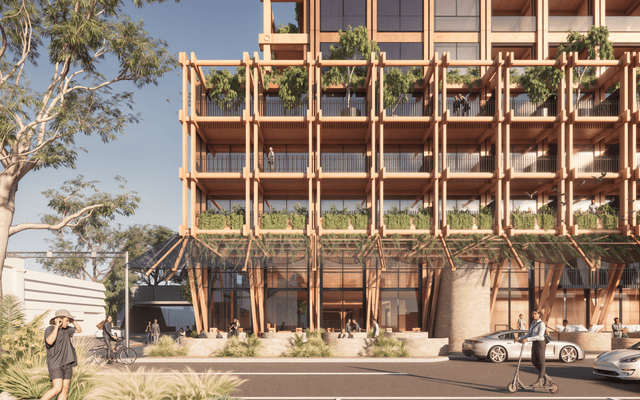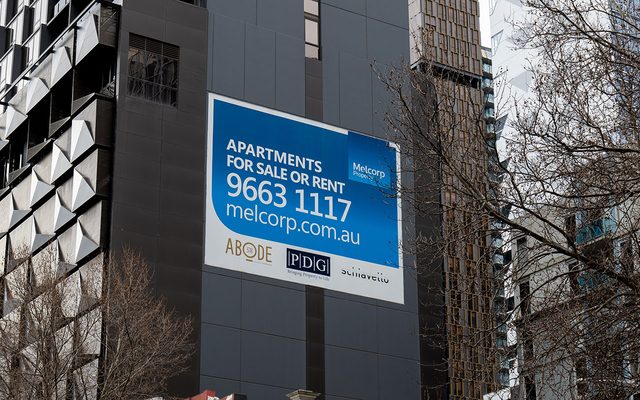This article is from the Australian Property Journal archive
SYDNEY unit rents continue to close in on the city’s housing rents, according to Domain’s June Quarter Rental Report.
The report also revealed that rents fell in Adelaide and Brisbane, and fell sharply in Perth and Darwin. Melbourne, Sydney and Hobart house rents were steady, and Canberra saw rents climb.
Another jump in Sydney unit rents in the quarter, from $520 to $525 per week, closed the gap behind house rents in the city to just $5 per week. The unit rent rise reflects a 5% increase over the past year, second only to Hobart. House rents increased 1% in that time, and vacancies eased 2.3% for units and 1.9% for houses.
Domain chief economist, Dr Andrew Wilson said that Sydney rents continued to rise and close in on house rents despite record new apartment building.
“House vacancy rates remain tight, but, thankfully for Sydney tenants, unit vacancy rates beginning to ease,” he said.
Melbourne’s median rents steadied at the record level of $380 for units and $400 for houses following large increases in the previous quarter. Unit rents rose by 2.7% over the year and house rents by 2.6%.
“Melbourne rents hit record levels last quarter and local tenants have felt the pressure. Now, with new rentals on the market, unit vacancy rates are easing, hinting that relief is on the horizon,” Wilson said.
Unit vacancies increased to 2.7% in the quarter and house rents to 1.7%.
Median rents in Brisbane came off record levels in the quarter, down slightly for units and houses to $375 per week and $400 per week respectively. Vacancies eased, up to 2.6% for houses and 3.3% for units.
Wilson said Brisbane tenants are seeing a welcome fall in unit and house rents.
“The good news for local tenants continues as a significant number of new units on market look set to ease vacancy rates and rents further,” he said.
Adelaide also saw falls in rents, to $285 per week for units and $355 per week for houses. Unit rents grew by 1.4% over the year whilst house rents dipped 1.7%. Vacancies were at 2.3% for units and 1.8% houses.
Wilson said the figures represented the first fall in house rents for Adelaide in two years.
“Combined with the decrease in unit rental prices, the current market is a breath of fresh air for local tenants,” Wilson said.
Perth rentals continued to fall, with unit rents hit $335 per week and house rents a five-year low of $390 per week. The figures reflected a 10.7% slump for units and 9.3% for houses. Vacancies were the highest of all state capital, at 4.8% for units and 4.3% for houses.
Wilson said the downturn of the resources economy meant Perth rents continued to fall, and with vacancy rates climbing there was no sign of an end point any time soon.
Darwin rents also experienced a sharp slump on the way to hitting their lowest point in more than five years. Unit rents slipped to $440 per week in the quarter after 12.0% fall over 12 months, and houses to $550 per week, down 8.3%. Unit vacancy rates increased to 4.4%, whilst house vacancies tightened to 2.1%.
“Darwin rents continue to fall at the fastest rate of any capital city. However, the tightening house vacancy rates could act to steady the recent declines,” Wilson said.
Hobart rents were steady in the quarter at the record levels achieved earlier this year, at $285 per week for units and $350 per week for houses. It recorded the fastest rental growth of the capital cities over the year, at 5.6% for units and 6.1% for houses. Vacancies tightened to 1.6% for units and 0.6% for houses.
Canberra rents increased in the quarter to round out strong growth over the past year, up 3.2% over 12 months to $400 per week for units and 5.6% to $475 per week for houses. Vacancy rates increased to 2.0% for units and 1.0% for houses.
Australian Property Journal




